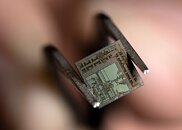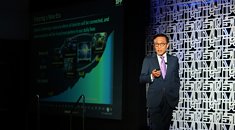2024 Global Semiconductor Materials Market Posts $67.5 Billion in Revenue
Global semiconductor materials market revenue increased 3.8% to $67.5 billion in 2024, SEMI, the global industry association representing the electronics design and manufacturing supply chain, reported today in its Materials Market Data Subscription (MMDS). The recovery of the overall semiconductor market as well as the increasing demand for advanced materials for high-performance compute and high-bandwidth memory manufacturing supported 2024 materials revenue growth.
Wafer fabrication materials revenue increased 3.3% to $42.9 billion in 2024, while packaging materials revenue grew 4.7% to $24.6 billion last year. The chemical mechanical planarization (CMP), photoresist, and photoresist ancillaries segments experienced strong double-digit growth driven by increased complexity and number of processing steps required for advanced DRAM, 3D NAND flash and leading-edge logic integrated circuits (ICs). All semiconductor materials segments, except for silicon and silicon-on-insulator (SOI), registered year-on-year increases. The demand for silicon, particularly in the trailing edge segment, remained weak in 2024 as the industry continued to work through excess inventory, resulting in a 7.1% decline in silicon revenue in 2024.
Wafer fabrication materials revenue increased 3.3% to $42.9 billion in 2024, while packaging materials revenue grew 4.7% to $24.6 billion last year. The chemical mechanical planarization (CMP), photoresist, and photoresist ancillaries segments experienced strong double-digit growth driven by increased complexity and number of processing steps required for advanced DRAM, 3D NAND flash and leading-edge logic integrated circuits (ICs). All semiconductor materials segments, except for silicon and silicon-on-insulator (SOI), registered year-on-year increases. The demand for silicon, particularly in the trailing edge segment, remained weak in 2024 as the industry continued to work through excess inventory, resulting in a 7.1% decline in silicon revenue in 2024.






























